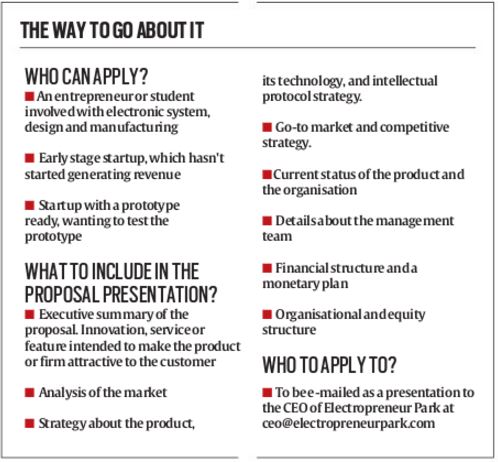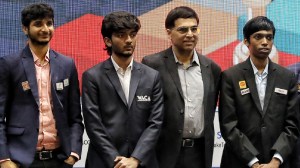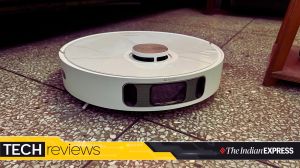- India
- International
Jumpstarting the startups
Centre plans to incubate 50 early-stage startups and create at least 5 global firms over the next five years to boost the sector.
 The incubator set up, called the ‘Electropreneur Park’ will also help early-stage ESDM startups access the funding agencies to facilitate seed funding for the ventures. (Illustration: Subrata Dhar)
The incubator set up, called the ‘Electropreneur Park’ will also help early-stage ESDM startups access the funding agencies to facilitate seed funding for the ventures. (Illustration: Subrata Dhar)
As part of its scheme to boost domestic electronic manufacturing, the government plans to incubate 50 early-stage startups and create at least five global companies in the electronic systems design and manufacturing (ESDM) sector over the next five years. If you own a relevant startup, which is in its early stage, and hasn’t started generating revenue, the incubator set up by the Centre could pitch in with commercial and technical development of the product, arrange for mentorship with industry veterans and provide services to deal with issues such as taxation, legal, accounting and business counselling, among others.
The incubator, which has been set up at the South Campus of Delhi University, is a three-way collaboration between the Ministry of Electronics and Information Technology, the Software Technology Parks of India, Delhi University, and the Indian Electronics and Semiconductor Association. The incubator set up, called the ‘Electropreneur Park’ will also help early-stage ESDM startups access the funding agencies to facilitate seed funding for the ventures and ensuring a transition from an incubatee to a self-sufficient electronics company.
Proposal
However, the process and its results aren’t as convenient as they sound. Till late August, Electropreneur Park had received over 200 proposals for incubation, out of which only six incubatees were taken on-board. This is what the set-up suggests you do to get on-board with the incubator.
First, ensure your company is involved with the ESDM sector, and you are an early-stage start-up, which hasn’t started generating revenue. Startups with a ready prototype, wanting to test their product can also apply.
In the presentation, include key aspects about the market the startup aims to operate in, the strategy about the product, its technology, the go-to market strategy, revenue model, etc.

Evaluation

“If any idea is found to be innovative, relevant and interesting enough, the entrepreneur is given an opportunity to present it to Electropreneur Park’s Project Evaluation Team (PET). After the presentations with PET, the entrepreneur is informed on the possibility of its incubation within seven days of the presentation. The PET may have multiple rounds of presentation,” according to information made available by the Electropreneur Park.
However, simply being “innovative, relevant and interesting enough” might not be adequate for a start-up to reach the next level. The completeness of the proposal will be scrutinised thoroughly and only those that have all the requisite information will be cleared for next stage, while the incomplete ones will be sent back in the waiting list to keep the back-up ready in case of failovers at a later stage.
An expert committee would scrutinise the proposal’s technical feasibility as well its ability to make money. This scrutiny will be done at a conceptual level whereby the committee will check for the preliminary feasibility. Here, according to the Electropreneur Park, it is important that the proposals should qualify for technical as well as commercial aspects.
Once a start-up clears the scrutiny stage, it will be interviewed by the committee and the “thrust of the interview would be to check how enterprising the candidate is and what is the level of clarity about implementing the project.”
Following the interviews, a start-up would be selected and enrolled for incubation.
Incubation
Once incubation begins, the venture would go through several review sessions with the officials of the Electropreneur Park to monitor the progress of the company. Alongside these reviews, the start-ups will also be mentored by four different classes of mentors. These include those from various industrial domains, established entrepreneurs and investors, management executives with roles such as HR, accounting, etc, and international mentors.
During the incubation, the selected start-ups will be provided with access to shared services and infrastructure such as legal aides, accountants, patent search, training, internships, etc. This is the time when the platform will aim to encourage research and development, innovation, and entrepreneurship in these ESDM start-ups by providing assistance during prototyping, development, and commercialisation of the products that were conceptualised at the Electropreneur Park.
Graduation
The graduation process begins when the venture has started generating revenue and has become sustainable, or has received seed funding from an investor.
To get an idea of what makes the cut, the six start-ups that are already on-board, are involved with products such as medical equipment, vehicle data collection, women safety devices using internet-of-things, smart modular switch boards for energy management, wireless data cards for image transmission, and electronic learning kits for skill development in the ESDM sector.
In India, there are a slew of start-up incubators with different focus areas such as mobile payment, banking, healthcare, e-commerce, analytics, education, etc. and these segments highlight the priority of these incubators into what they prefer investing their resources. Similarly, the NDA government’s push to reduce the electronic import bill and promote domestic electronic manufacturing reflects the Centre’s move to provide a booster shot to start-ups in the ESDM sector.
Must Read
Apr 23: Latest News
- 01
- 02
- 03
- 04
- 05




































